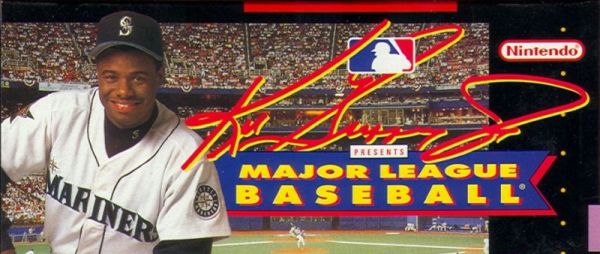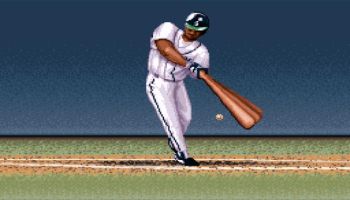
Sony’s MLB: The Show franchise offers an incredible facsimile of America’s Pastime, but with Opening Day upon us, I find myself instead gravitating towards my NES and Super NES shelves to replay old favorites like Jaleco’s Bases Loaded, Konami’s Base Wars, and Nintendo’s Ken Griffey Jr. Presents Major League Baseball.
Nintendo didn’t have to look very far to find a spokesman for the Super NES game… Griffey and the rest of the Mariners were actually already on the payroll. Even though he didn’t care for the sport, CEO Hiroshi Yamauchi purchased the baseball team in 1992 and owned it until his death in 2013.
But Yamauchi’s tenure at the head of the Mariners organization did more than help produce a handful of great Super NES and N64 games, it also upended one of Major League Baseball’s longstanding traditions.
 Insert Quarter is a glimpse into gaming’s past, present, and future through an exploration of historical, retrospective, and contemporary reporting.
Insert Quarter is a glimpse into gaming’s past, present, and future through an exploration of historical, retrospective, and contemporary reporting.
Hiroshi Yamauchi may have been obsessed with Go, but his intensity for that ancient board game did not transfer to sports. So it’s a bit odd that he owned the Seattle Mariners for more than two decades, just as Ken Griffey Jr. (and Randy Johnson and Alex Rodriguez) made them one of the most exciting teams in baseball. But aside from Griffey’s video games and a handful of in-person promotions at Safeco Field, it was easy to forget that the CEO of Nintendo even owned the team.
Thankfully, Chris Scullion of Video Game Chronicle retold the story earlier this year. He recalled Yamauchi’s desire to give something back to the people of Seattle for being Nintendo of America’s home since the early 1980s, as well as Major League Baseball’s reluctance in accepting a foreign ownership group (Nintendo’s Howard Lincoln would ultimately serve as the representative owner of the team in Yamauchi’s stead).
Thanks to Nintendo (and Griffey), the Mariners became a contender and won the American League West in 1995, 1997, and 2001. Maybe more importantly, a person in a Mario costume danced on the field a few times:
The deal was done and on 1 July 1992, the Baseball Club of Seattle gained control of the Seattle Mariners. Although he was the majority owner, Yamauchi didn’t really have any interest in the team. As far as he was concerned, the buyout was a goodwill gesture to the people of Washington to help them keep their team in Seattle, as a thank you for their help supporting Nintendo. As such, he never attended a single game – not even when the Mariners travelled to Tokyo to play a series of exhibition games – and never visited Seattle while he owned the team.
That Time When… Nintendo Bought a Baseball Team
While Nintendo spent the 1990s buying baseball teams, Midway was busy reinventing arcades with the bloody mayhem of Mortal Kombat and the highflying acrobatics of NBA Jam. The Jam formula was quickly adapted to football and hockey, but baseball remained the odd sport out until MLB Slugfest 2003, which bypassed the arcade for a direct-to-console launch in 2002.
Fans always wondered what could have been, and though we didn’t know it at the time, Midway briefly considered expanding their arcade empire into baseball in 1996, when an “MLB Jam” prototype known as Power-Up Baseball entered development.
The Video Game History Foundation‘s Frank Cifaldi recently unearthed the unfinished arcade game from the archives of programmer Chris Oberth. To get a more complete picture of Power-Up Baseball, he also tracked down several members of the development team to fill in the gaps (sadly, Oberth passed away in 2012), and discovered that its in-progress code is fully playable in MAME:
In the decades that have followed, baseball fans have been scratching their heads, wondering why they didn’t get their own “MLB Jam.” To this day there are references to fantasy versions of what the game might be.
What very few realize is that Midway had indeed been working on a baseball game in the Jam lineage behind the scenes. The game used the same photo capture technology as Jam, had similarly exaggerated movement, and a charismatic announcer of its own (in this case, White Sox legend “Hawk” Harrelson). It was a collaboration between NBA Jam creator Midway Games and Golden Tee Golf creator Incredible Technologies, attempting to combine the best of both worlds.
Baseball’s Lost “NBA Jam” Revealed
While Midway tried to translate baseball into a Jam-like experience in the 1990s, Don Daglow was running in the opposite direction. Beginning in 1991, the prolific game developer would pour his energies into the Tony La Russa Baseball franchise, refining a baseball simulation engine that he first created 20 years earlier.
Daglow was just a teenager when he was first introduced to the PDP-10 mainframe at Pomona College in 1971, but he quickly taught himself how to program the machine, and then used his knowledge to create Baseball, the first sports simulation to offer choices to its players.
Mark Kendall profiled Daglow’s career as a programmer and baseball fan for the Pomona College Magazine in 2013:
And then, still in love with the old ball game, he arrived at college, where he met his first mainframe computer, the PDP-10, tied in to terminals in Mudd-Blaisdell residence hall. “That one moment,’’ says Daglow, “changed my life pretty dramatically.” He learned programming and in no time he thought, “‘Oh, wait a sec, now I can do baseball.’”
By 1971, English major Daglow had come up with the first computer simulation baseball game in which the player could make choices—moves like sending in a pinch hitter or having the pitcher walk a batter intentionally—with results from each play printed out on paper.
Putting Bytes into the Old Ball Game
Today is Opening Day and any sportswriter will tell you that fans and players are hopeful for the future because everyone’s in first place. Half the teams will lose today, and most fans won’t be celebrating a World Series win this Fall, but you won’t need to wait ’til next year to try your luck at another season of MLB: The Show (or even something a little more retro).

